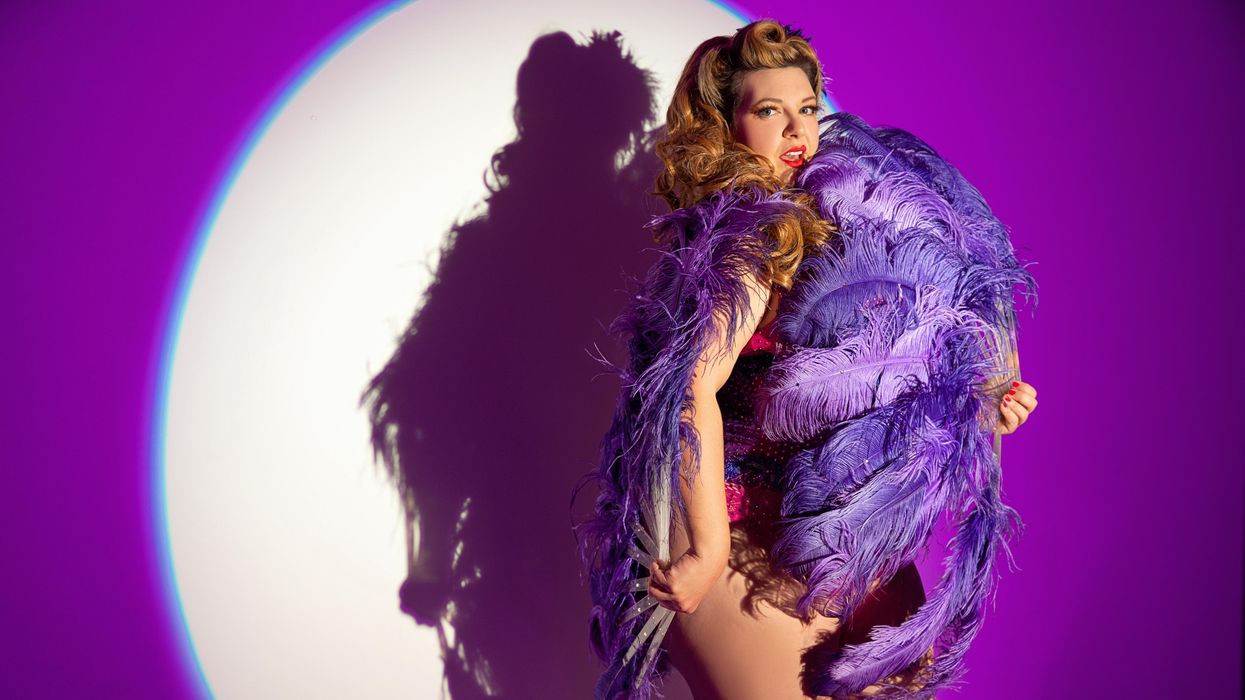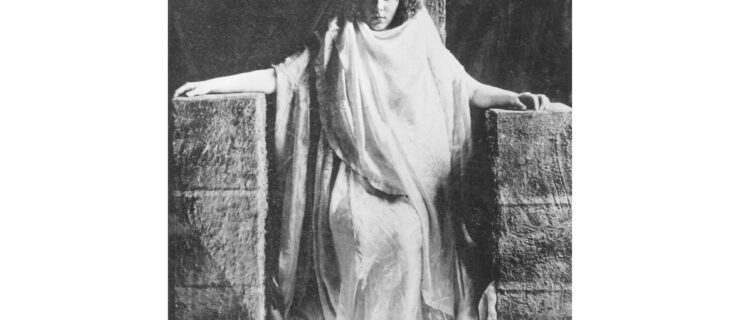Why Some Dancers Are Finding an Outlet in Burlesque
If you hear that someone’s a burlesque performer, you might call to mind Gypsy Rose Lee’s journey from vaudeville youngster to snobby stripper in Gypsy, or even the painted ladies of Moulin Rouge! Burlesque, however, is neither. And for the growing number of women who have found their way to nightlife performance from a concert-dance background, burlesque can feel pretty close to a feminist utopia—one where women’s bodies and choreographic voices are celebrated.
Yes, stereotypes and tokenism remain an issue. But burlesque performers often find an outlet they never imagined in formal dance studios. “It really fills my cup,” says Marcy Richardson, who marries aerial dance, opera and pole dancing in her nightlife act, and also performs with the burlesque troupe Company XIV. “I get to be my most authentic self and let go of any expectations that people have.”
Burlesque’s history in the U.S. has deeper roots than modern dance or even ballet. It grew out of Victorian music hall, Victorian burlesque and minstrel shows in the second half of the 19th century. Today’s version of burlesque best resembles that of the early 1900s, when vaudeville reigned supreme. The form flourished during prohibition, and, pushed partially underground, the striptease took center stage. A wave of censorship shut down shows in the late ’30s, but burlesque came roaring back in the ’40s and ’50s, thanks to female trailblazers like Lili St. Cyr and Tempest Storm.
An entrepreneurial spirit remains firmly embedded in 21st-century burlesque. Like concert-dance choreographers, burlesquers often wear many hats: dancemaker, costume designer, self-promoter, makeup artist. “Generally, we’re independent artists,” says Jeez Loueez, a New Orleans–based burlesque performer who started out in musical theater. “It’s up to you to seek out the jobs—and get your own rehearsal space, edit your own music and design your own costumes.”
One of the most rewarding differences from a formal dance career is how often you get to perform, says burlesquer Dirty Martini. Burlesque acts translate well to myriad venues with the capacity to pull together a show quickly. “When you’re rehearsing for a contemporary-dance work, it takes, what, six months to get a concert together, and maybe you can perform for one weekend,” says Martini. “In nightlife, there are shows four or five times a week. You can take an idea you have, and in a week it’s onstage.”
The need to constantly market yourself in order to generate an audience and a loyal following feels similarly exhausting to the hustle demanded of independent contemporary choreographers, however. For most of Loueez’s burlesque career, she’s had to get enough butts in seats to turn a profit for herself. “Say there’s a bar that wants to have a burlesque show,” she says. “You might reach out to a producer, who’ll say, ‘Great. It’ll cost me $2,000 to produce this event.’ Now you have to sell tickets and match that cost before getting a cut of the door.” Loueez likes to joke that if she worked at Walgreens, she wouldn’t need to constantly post on social media that everyone should come visit her at a certain time. “I wish I could just go to work without having to shout about it every day on social media.”
Despite burlesque’s hustle culture, the transition into nightlife for most dancers-turned-burlesque-performers feels like taking a big gulp of fresh air. “Before burlesque, I would go to auditions, and I could see that I was a better dancer, but I wasn’t getting the job because I looked a certain way or I wasn’t the right height,” says Michelle L’amour, known colloquially as The Most Naked Woman. While she was dancing for an industrial glam-rock band, the front man, whom she was dating, asked her if she’d like to create a burlesque show as an opening act. L’amour said yes (“even though I had no idea what that was,” she says with a laugh). When she did her first striptease, she knew this was going to be her life. (And that front man is now her husband.)
For Zelia Rose, a burlesque performer who is also a swing in Australia’s production of Hamilton, the absence of needing to look or perform better than someone else is a big draw. “Sure, there’s always going to be competition,” she says, “but there’s never a sense of ‘Oh, I’m comparing myself to this person, the way my body looks.’ There’s more of a celebration of coming together.”
Burlesque offers a particular performance haven for plus-size women, who are weary of concert-dance companies that seem to uniformly hire a highly specific body type: thin. When she graduated from Purchase College—a program she says she entered on weight probation—Martini knew the odds of finding a contemporary-dance gig were small. “I auditioned for everyone, and I knew no one was going to hire me, because I was a size 14 or 16,” she says.

Carving a space for herself and helping to shape the nascent burlesque scene in New York City in the 1990s was thrilling. “It’s exciting for me to present a body that people get excited about,” says Martini, a past winner of burlesque’s version of the Olympics, the Miss Exotic World pageant. “It’s not just men being excited because it’s titillating—the majority are women who are so excited to see a body that’s not reflected in magazines or in television or the movies. They’re like, ‘Oh, thank God! Somebody’s representing the majority of women in the U.S. who are over a size 12.’ “
Of course, stereotyping still exists. “When you look at the ways shows are cast, it might be five thin white girls and a brown girl and a fat girl,” says Jezebel Express, a burlesque dancer who recently began performing out of a specially outfitted school bus. “You still see some idea that people are welcome, but only if they’re achieving at a super-high level.” It’s common for plus-size performers to feel relegated to comedic routines, Express says: “They expect to have to deflect their sexuality.”
Burlesque, like nearly every performance field, still has work to do when it comes to moving beyond tokenism and successfully integrating performers of color. “I get pigeonholed into always being the representation card,” says Rose. “I’ll often be the only POC visible in shows.”
It’s an audience-diversity issue, too, says Loueez. “Producers will ask me, ‘How do I get my audience to be more diverse?’ ” she says. “Well, you booked 10 skinny white ladies! If you’re not seeing yourself reflected onstage, you’re not going to go to those shows.”
Loueez, who 10 years ago founded Jeezy’s Juke Joint, a Black Burly Q Revue, as a way to shine a light on Black burlesque performers, uses her teaching career as a tool for change. “I started teaching because I was tired of seeing appropriation,” she says. “A lot of people were using it for comedic effect: ‘How hilarious is it that I’m white and I’m trying to twerk!’ But if a Black burlesque performer did the same act, it would be too stripper-y or raunchy. I have to remind myself that burlesque is not a sparkly bubble where racism and ableism and classicism don’t exist.”
It is a space, performers argue, that offers a wider range of self-expression than its concert-dance counterpart—and seems more ready to tackle the problematic issues that need fixing. “We live in a culture that created a hierarchy of bodies that serve the patriarchy,” says Express. “But people are slowly hopping off the train, one at a time. And I get to help them off the train—with burlesque.”




